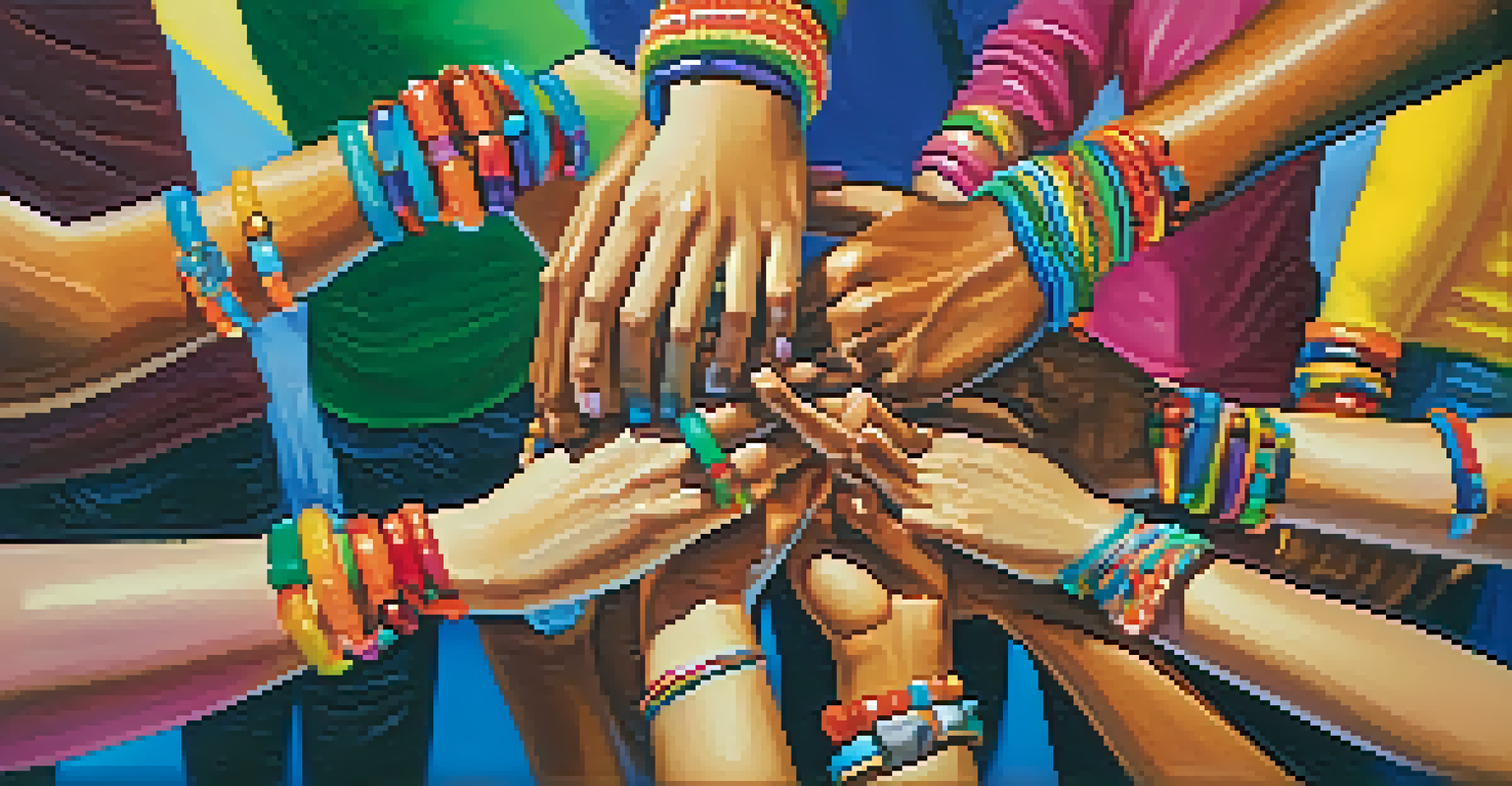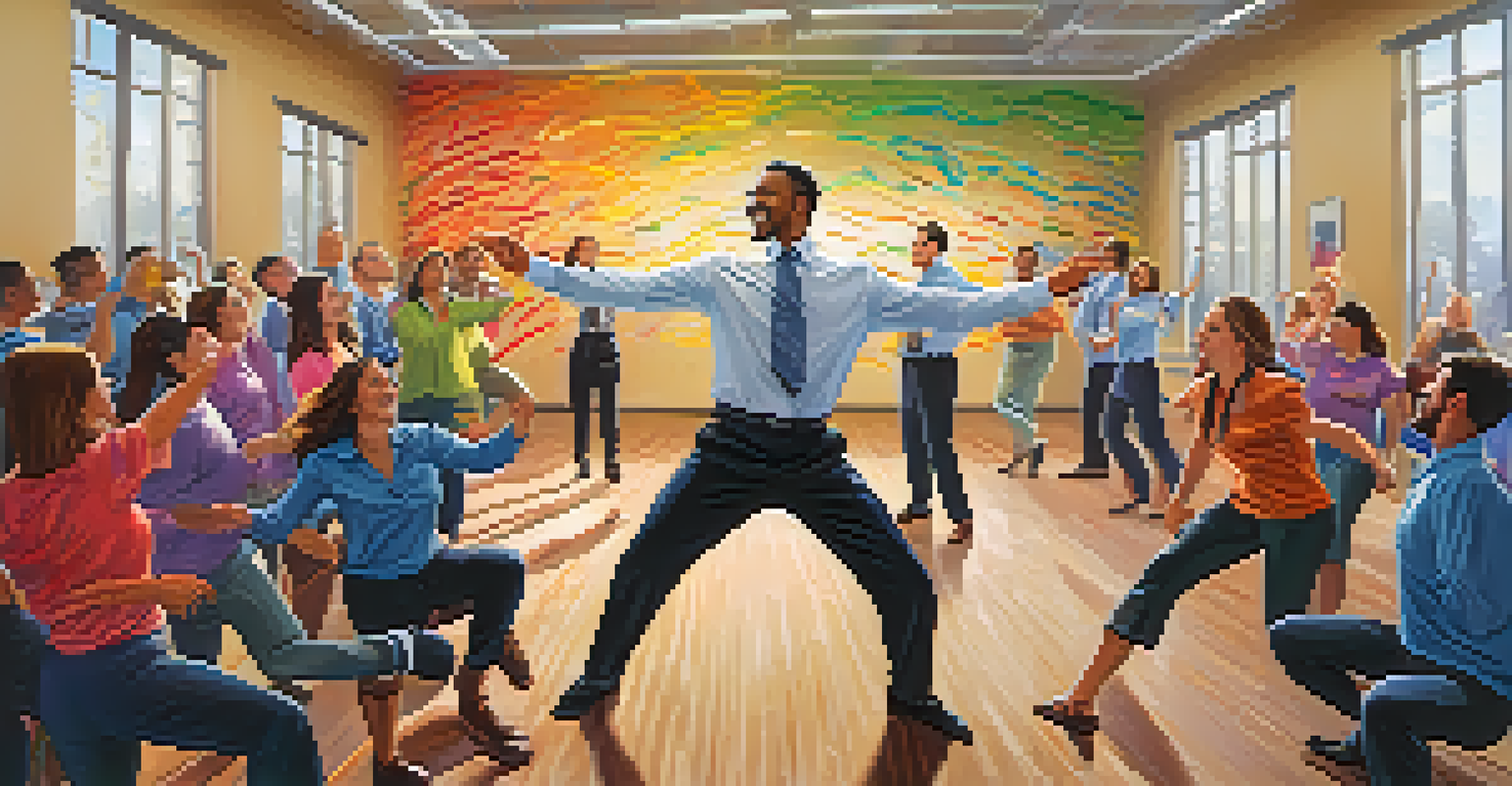Team Building Through Dance: Uniting Employees Creatively

The Power of Dance in Team Building Activities
Dance is more than just a form of expression; it's a powerful tool for building connections among team members. When employees move together, they break down barriers and foster a sense of unity. This collective experience can enhance communication and collaboration in the workplace.
Dance is the hidden language of the soul.
By engaging in dance, employees tap into their creativity, allowing for a fresh perspective on problem-solving. This shift in mindset can lead to innovative ideas and stronger teamwork. Plus, it’s an enjoyable way to relieve stress and boost morale, which are essential for a healthy work environment.
Incorporating dance into team-building activities creates lasting memories and strengthens relationships. As colleagues bond over shared experiences, they’re more likely to support one another in their daily tasks. Ultimately, this leads to a more cohesive and productive team.
How Dance Encourages Collaboration Among Teams
Dance inherently requires collaboration, as it involves synchronizing movements and working towards a common goal. This collaborative spirit translates seamlessly into the workplace, where teamwork is essential. Employees learn to listen to one another and adapt, skills that are vital for successful projects.

When teams participate in dance, they often have to communicate non-verbally, which strengthens their ability to understand each other without words. This type of communication fosters trust and respect among team members, creating a more harmonious work atmosphere. It’s a reminder that connection goes beyond just verbal exchanges.
Collaboration Through Movement
Dance encourages non-verbal communication and builds trust, essential for effective teamwork.
Moreover, dance challenges employees to step out of their comfort zones, encouraging them to take risks together. This shared vulnerability not only enhances their bond but also inspires creativity and innovation in their work. After all, when team members feel safe to express themselves, great ideas can flourish.
Creating a Fun and Inclusive Work Environment
Incorporating dance into the workplace promotes a fun and inclusive atmosphere. When employees of all skill levels participate, it levels the playing field and encourages camaraderie. Everyone, regardless of their dancing ability, can find joy in the experience, fostering a sense of belonging.
Alone we can do so little; together we can do so much.
This inclusivity is crucial in diverse teams, as it allows individuals to express themselves in unique ways. Dance can bridge cultural gaps, providing a shared platform for creativity and collaboration. When employees feel valued and included, their commitment to the organization increases.
Additionally, a fun environment boosts employee engagement and motivation. When teams enjoy what they do together, their enthusiasm often translates into higher productivity. This positive energy can create a ripple effect, enhancing overall workplace culture.
Building Trust Through Shared Dance Experiences
Trust is the backbone of any successful team, and dance provides a unique way to build it. When employees dance together, they learn to rely on one another, creating a sense of accountability. This shared experience fosters deeper connections that extend into daily work interactions.
As team members navigate dance routines, they often encounter challenges that require cooperation and support. Overcoming these obstacles together cultivates a sense of achievement, reinforcing trust among colleagues. Such experiences can lead to stronger relationships and more resilient teams.
Dance Fosters Team Unity
Engaging in dance helps break down barriers and enhances communication among team members.
Ultimately, the trust built through dance can enhance team dynamics. Employees who trust each other are more likely to collaborate effectively and communicate openly. This leads to a more innovative and successful workplace.
Boosting Creativity with Dance Workshops
Dance workshops can serve as a fantastic platform for boosting creativity in the workplace. These sessions encourage employees to think outside the box, breaking free from conventional routines. Engaging in creative movement can inspire new ideas and fresh approaches to challenges.
During dance workshops, employees are often encouraged to express themselves freely, which can lead to unexpected insights. This form of expression allows for exploration beyond typical work-related thinking. The freedom to create can spark innovative solutions that benefit the entire team.
Moreover, the skills developed in dance workshops can be applied to various workplace scenarios. For instance, improvisation in dance can enhance adaptability in fast-paced environments. By nurturing creativity through dance, teams become more agile and responsive to change.
The Role of Leadership in Dance-Based Team Building
Leadership plays a crucial role in the success of dance-based team-building activities. Leaders can set the tone by actively participating and demonstrating enthusiasm. When leaders join in, it encourages employees to embrace the experience and fosters a culture of openness.
Additionally, leaders can tailor dance activities to align with team goals, making them more relevant and impactful. By connecting the dance experience to work objectives, teams can see the tangible benefits of their efforts. This strategic approach enhances the overall effectiveness of the activities.
Leadership Drives Dance Success
Active participation from leaders in dance activities fosters openness and aligns team goals with experiences.
Furthermore, effective leaders understand the importance of feedback during these activities. By encouraging open dialogue about the experiences, leaders can identify strengths and areas for improvement. This continuous growth mindset reinforces the value of dance in team building.
Measuring the Impact of Dance on Team Dynamics
To truly understand the benefits of dance in team building, it’s essential to measure its impact on team dynamics. Surveys and feedback sessions can provide valuable insights into how employees feel about their experiences. Gathering this information helps organizations assess the effectiveness of dance activities.
Additionally, observing changes in team performance and collaboration can be a strong indicator of success. If teams display improved communication and creativity post-dance activities, it suggests a positive impact. Tracking these changes over time can highlight the long-term benefits of incorporating dance into team building.

Ultimately, measuring the impact of dance reinforces its value as a team-building tool. By demonstrating tangible results, organizations can justify continued investment in creative activities. This commitment to fostering a dynamic workplace can lead to sustained employee engagement and satisfaction.